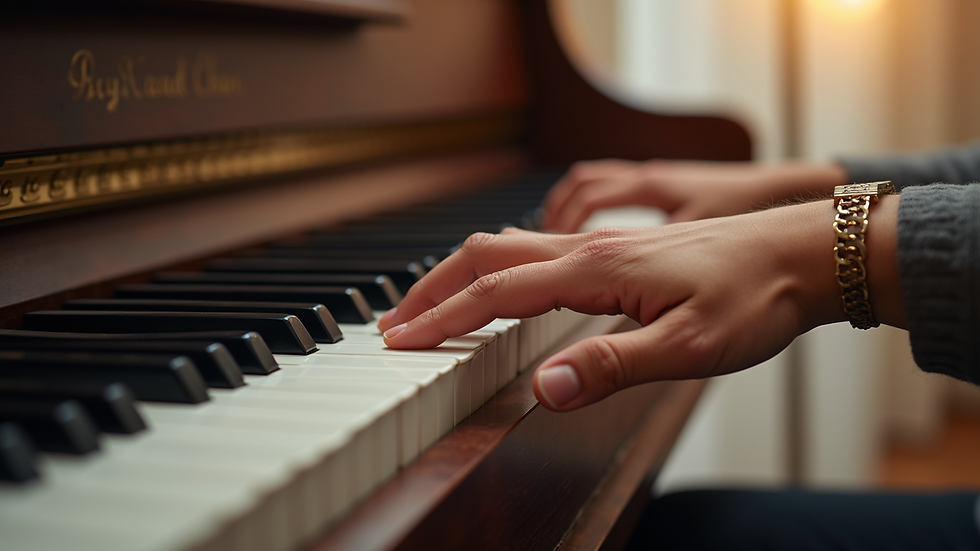Exploring the Role of Art in Emotional and Physical Healing
- Diane Broussard

- Jun 9
- 4 min read
Art has long been recognized for its beauty and ability to communicate emotions. However, its potential as a powerful tool for healing—both emotional and physical—is often overlooked. In this post, we will delve into the profound ways in which various forms of art contribute to healing processes. Whether through visual arts, music, or movement, the healing arts unlock pathways to wellness that can be transformative.
The Healing Arts: A Combination of Creativity and Therapy
The concept of the healing arts encompasses a wide range of practices that combine creativity with therapeutic techniques. Various disciplines, including art therapy, music therapy, and dance therapy, utilize the creative process to help individuals express their feelings, confront their challenges, and develop coping skills. These therapies have gained popularity due to their effectiveness in addressing conditions such as depression, anxiety, and chronic pain.
For example, studies suggest that engaging in creative activities can decrease stress levels significantly. In a study published in the American Journal of Public Health, researchers found that participating in expressive art forms, such as painting and drawing, led to markedly lower levels of cortisol, the body’s stress hormone. This establishes a clear connection between artistic expression and emotional well-being—underscoring the benefits of the healing arts.

Art Therapy: Harnessing Creativity for Healing
Art therapy is one of the most well-known approaches under the umbrella of the healing arts. It allows individuals to use visual art creation to convey feelings and experiences in a non-verbal way, which can be incredibly beneficial when words are insufficient.
Trained art therapists guide clients through projects, helping them to illustrate their emotions and reflect on their experiences. Through painting, drawing, and sculpture, clients can explore complex feelings, which might be difficult to articulate verbally.
In a hospital setting, art therapy has provided significant assistance to patients dealing with illness. For instance, patients undergoing cancer treatments have reported feeling more relaxed and less fearful after participating in art therapy sessions. A report showed that 70% of patients experienced a reduction in anxiety after just a few sessions.

The Power of Music in Healing
Music therapy is another effective method within the healing arts. This form of therapy employs music's ability to stimulate emotional responses and can be tailored to meet each individual’s needs. Music therapists often use both listening and creating music to facilitate healing processes.
Research has shown that music can stimulate the brain's reward center, releasing dopamine and providing feelings of pleasure and comfort. For individuals battling addiction or emotional distress, music therapy can replace negative behaviors with creative expression, contributing positively to recovery.
Some hospitals have adopted music therapy as a standard practice for post-operative care. The soothing sounds of music can aid in pain management and promote a quicker recovery. A meta-analysis found that patients who listened to music during surgery reported having lower levels of pain and anxiety compared to those who did not.

Dance and Movement Therapy
Dance and movement therapy (DMT) uses physical movement to help individuals explore their emotions and physical sensations. In sessions, individuals are encouraged to move freely, allowing them to express feelings that may be stuck. This can be particularly beneficial for those with trauma or mental health challenges.
Many studies illustrate the effectiveness of DMT in treating conditions such as PTSD and anxiety disorders. The gentle movement encourages a healthy release of pent-up emotions that can contribute to physical and emotional distress.
The rhythmic movements involved in dance can also enhance physical health, improving cardiovascular function and flexibility. For those dealing with physical ailments or recovery from injury, movement therapy teaches important body awareness and encourages reconnecting with one’s physical self once again.
Integrating the Healing Arts into Daily Life
Incorporating elements of the healing arts into daily routines can effectively bolster emotional and physical well-being. One practical approach is to create a personal "art hour" each week. During this time, you might engage in painting, writing, or even dancing—whatever resonates with you personally.
Mindfulness practices can also be enhanced with creative elements. For instance, you can combine meditation with music by listening to calming sounds to encourage relaxation. Journaling can serve as a powerful tool for self-reflection and can be paired with visual representations of your feelings.
Additionally, local initiatives and healing arts centers provide opportunities for community involvement. Many workshops are available, where participants engage in group activities centered around art, music, or dance. If you are interested in exploring these options, consider visiting a healing arts center in your area.
Embracing the Journey of Healing with Art
The journey toward healing is as diverse as the people who embark on it. Art and creativity play an essential role in this journey by offering avenues for expression and tools for understanding oneself better. Each individual may find different forms of art that speak to their unique needs.
As the field of healing arts continues to grow, more people are becoming aware of the significant benefits that art can provide. Challenges in mental and physical health can be approached creatively, empowering individuals to reclaim control over their lives.
By embracing the healing potential of art, individuals not only foster personal development but also become part of a larger community that promotes well-being through creativity. Discovering the ways art can heal opens up opportunities for transformation that resonate deeply, encouraging a holistic approach to health that encompasses body, mind, and spirit.




Comments